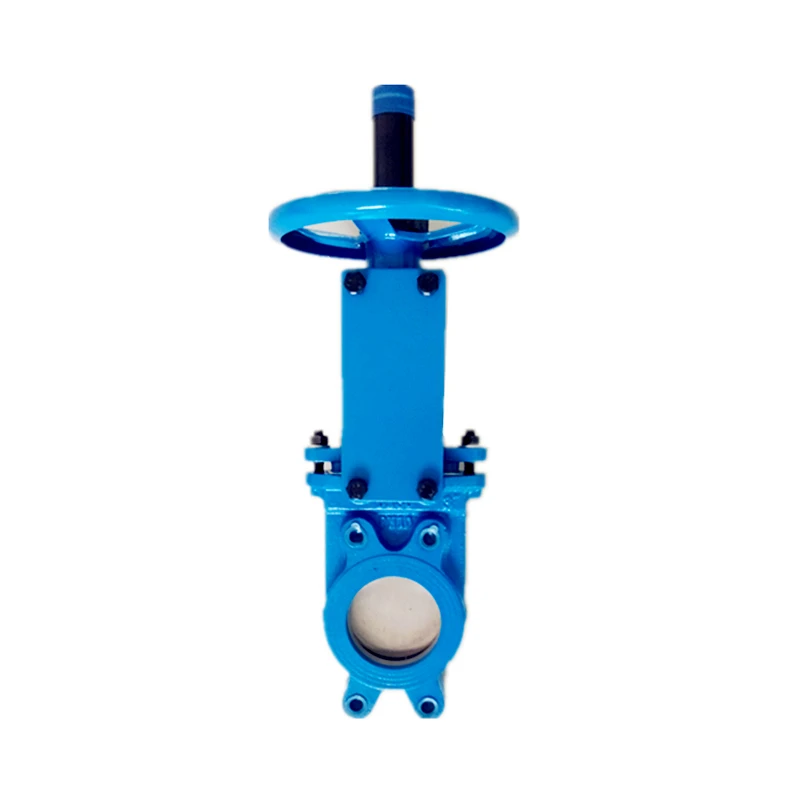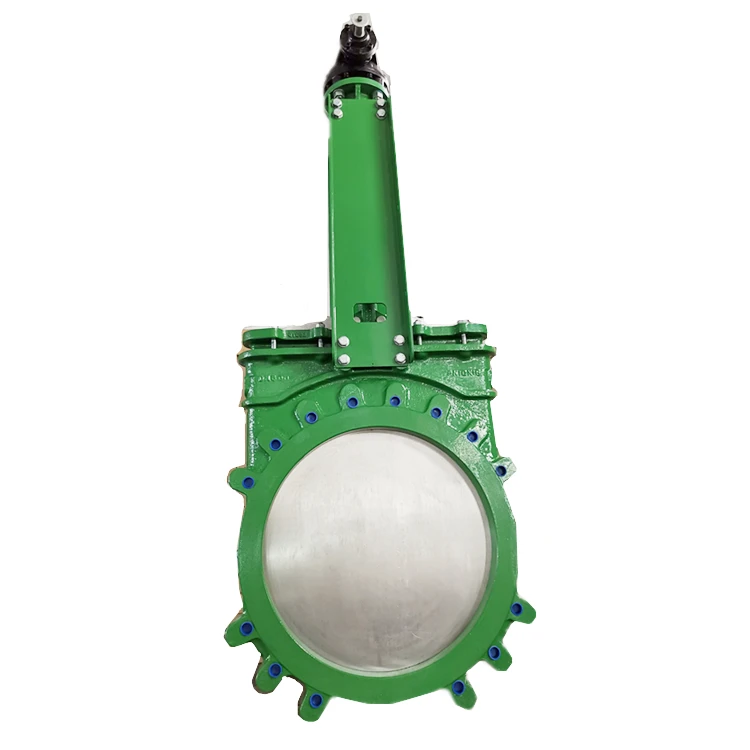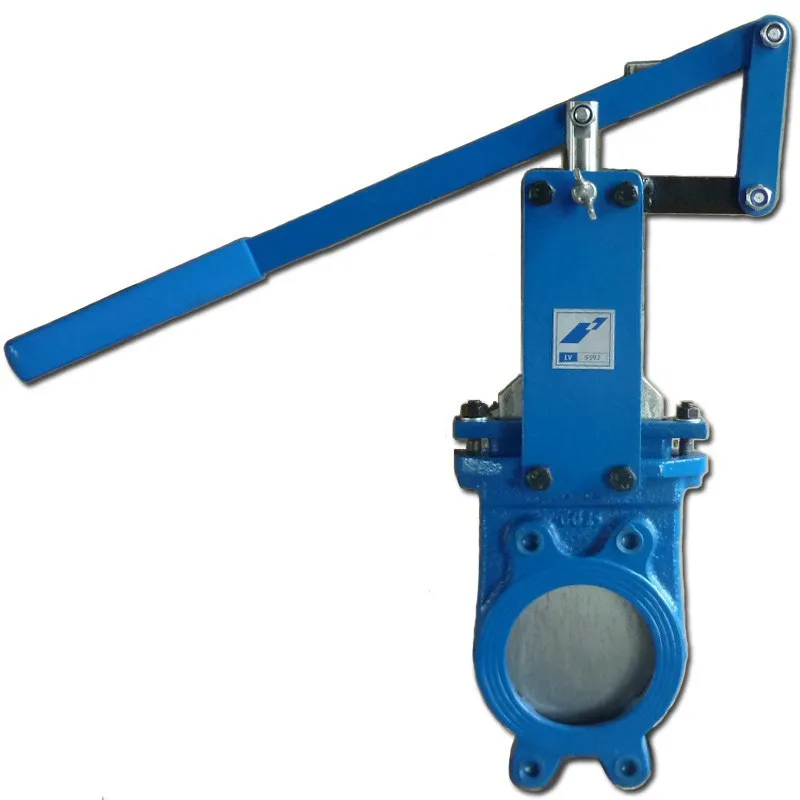Exploring Knife Gate Valves: Manufacturers Leakage Classes and Images
Key Takeaways
Knife gate valves are essential components in various industrial applications, widely recognized for their ability to manage the flow of liquids and slurries. Their unique design typically features a blade-like gate that slides into the valve body, providing a tight seal when closed. This design minimizes the risk of stagnation, making it ideal for applications involving slurries or bulk materials.
The manufacturers of knife gate valves have made significant advancements in technology and materials, contributing to enhanced performance and durability. In India, several notable manufacturers have arisen, offering a diverse range of products tailored to meet the specific needs of various sectors including water treatment, mining, and pulp and paper industries. Known for their commitment to quality and innovation, these companies play a crucial role in ensuring that industry standards are met.
An important aspect to consider when selecting knife gate valves is the leakage class. This classification refers to the amount of fluid leakage permitted through the closed valve at specific pressures. Different industries may require valves with varying leakage classes, which can impact performance and operational costs. Understanding these classifications aids in selecting the appropriate valve for optimal performance.
Visual representations through images showcase not only the design but also highlight an array of applications where knife gate valves excel. These images serve as practical references for professionals seeking insight into how these components function across different settings.
These key points provide a foundational understanding of knife gate valves, emphasizing their design effectiveness, manufacturers’ innovations particularly in India, varying leakage classes critical for operational efficiency, and visual understanding through practical images.
Overview of Knife Gate Valves: Design and Functionality
Knife gate valves serve a crucial role in various industrial applications, providing an efficient solution for on-off control of flow in pipelines. The design of a knife gate valve incorporates a sharp-edged blade that slices through the medium, ensuring minimal resistance. This unique feature allows for efficient handling of slurries, solids, and other viscous materials. The functionality of these valves is characterized by their ability to close tightly, minimizing leakage and maintaining system integrity. Valves are constructed from materials like stainless steel or cast iron to withstand harsh environments. Understanding the operational parameters is vital; pressure ratings, temperature limits, and media compatibility are essential for selecting the appropriate valve for specific applications.
"A well-designed knife gate valve can significantly enhance operational efficiency while reducing downtime associated with maintenance."
Manufacturers focus on optimizing these designs to cater to diverse industrial needs. Reliability is fundamental in pipeline applications, as any leakage can lead to expensive repairs and operational setbacks. Proper installation and regular maintenance enhance performance longevity. In addition, advancements in technology have led to better sealing mechanisms that further enhance their performance. Overall, knife gate valves remain indispensable tools across various sectors such as wastewater treatment, mining, and chemical processing due to their robust design and functionality.

Key Manufacturers of Knife Gate Valves: A Focus on India
India's market for knife gate valves has witnessed significant growth, driven by increasing industrial demands and the need for reliable control systems. Several manufacturers have emerged as leaders in this segment, providing various options that cater to different industrial requirements. Companies such as Cameron, Valmet, and KSB have established their presence, offering products that showcase effective design and robust functionality. These manufacturers prioritize engineering excellence, utilizing advanced technologies to ensure durability and efficiency. The wide range of knife gate valve designs available in India includes options suitable for applications in industries such as wastewater treatment, pulp and paper processing, and mining operations. Such valves are engineered to withstand harsh operating conditions while maintaining optimal performance levels. Furthermore, local manufacturers are increasingly adopting international standards to enhance product quality, resulting in a competitive landscape that benefits consumers by providing a variety of choices tailored to specific operational needs.
Understanding Leakage Classes in Knife Gate Valves
Leakage classes refer to the permissible limits of fluid leakage through a valve during operation. Knife gate valves, commonly used in various industries, are classified based on their ability to prevent leakage, which is critical for maintaining system integrity and efficiency. Different leakage classes indicate varying levels of tightness and performance characteristics. For instance, a valve classified under the Class I leakage standard may allow minimal leakage, suitable for applications that require high reliability and low fluid loss. In contrast, valves in Classes II and III may permit greater amounts of leakage, offering flexibility for less critical applications where absolute sealing is not as crucial.
The choice of a leakage class directly impacts the overall system's functionality. Selecting the appropriate class should consider factors such as pressure, temperature, and the type of medium being controlled. It is essential for industries like water treatment and mining to ensure that the chosen valve meets specific operational requirements. In India, various manufacturers adhere to stringent quality standards when producing knife gate valves, ensuring they conform to international leakage class specifications.
Regular maintenance and inspection play a vital role in ensuring that knife gate valves operate within their designated leakage class limits throughout their lifespan. Understanding these classes facilitates better decision-making when selecting valves for specific applications, ultimately contributing to enhanced operational performance and reduced downtime in industrial processes.

Visual Guide: Images of Knife Gate Valves and Their Applications
Knife gate valves feature a unique design that allows them to excel in various applications, including in waste management, water treatment, and mining industries. The blade-like design of the valve's gate provides a reliable cut through slurries and other thick materials, making them efficient for isolating flow. Images of these valves showcase their robust construction and often demonstrate regional adaptations. For instance, the appearance of knife gate valves in India may reflect local manufacturing influences that cater to specific operational requirements. As such, observing these images provides practical insight into dimensions, gear mechanisms, and mounting configurations that may be unique to different manufacturers.
The visual representation of knife gate valves also often illustrates their critical role in controlling flow with minimal leakage. Manufacturers uphold strict design standards to ensure compliance with various leakage classes, crucial for industries seeking both reliability and safety in their operations. The accompanying table below summarizes key characteristics associated with knife gate valve designs:
Parameter | Specification |
|---|---|
Size Range | 2" to 60" |
Pressure Rating | Up to 150 PSI |
Body Material | Carbon Steel, Stainless Steel |
Sealing Class | ANSI/FCI 70-2 Class IV |
Images showcasing these specifications highlight the diverse applications of knife gate valves across different sectors while emphasizing the importance of selecting a suitable product to maintain operational integrity.
Conclusion
Knife gate valves serve essential roles in various industries, offering a combination of durability and efficiency. The design of these valves facilitates the reliable control of flow in applications ranging from wastewater management to food processing. Each manufacturer presents unique specifications, ensuring a diverse selection that caters to different operational requirements. Understanding the leakage classes associated with knife gate valves is crucial in determining their suitability for specific environments; this classification provides insight into allowable leakage rates and performance expectations. Emphasizing the Indian market reveals multiple key players that contribute to advancements in knife gate valve technology, driving innovation and quality. Moreover, visual representation through images illustrates their versatility in numerous applications, reinforcing their significance within contemporary engineering solutions. The comprehensive examination of these components underscores the pivotal role that knife gate valves play in maintaining effective operational standards across various sectors.
FAQs
What are knife gate valves used for?
Knife gate valves are primarily used in on-off applications in industries for handling slurry, liquid, and gas flows. They excel in environments where tight sealing and the ability to cut through medium accumulated in the pipeline are essential.
What are the key advantages of knife gate valves?
The advantages include their robust design allowing for minimal leakage, ease of maintenance, and compatibility with various media. Their ability to handle large flow rates without obstruction makes them a preferred choice for many industries.
Who are the prominent manufacturers of knife gate valves?
Several key manufacturers exist globally, with a notable presence in India. Companies specializing in valve manufacturing leverage advanced technology to produce reliable products tailored to different industrial needs.
What is the importance of leakage classes in knife gate valves?
Leakage classes define the valve’s performance regarding leakage rates under specified conditions. Understanding these classes helps in selecting appropriate valves for particular applications, ensuring efficiency and compliance with industry standards.
Where can I find images of knife gate valves?
Images of knife gate valves can be found on various industrial supply websites, manufacturer catalogs, and product brochures. They provide visual references that highlight design features and functional capabilities of different valve types.
How do I determine which knife gate valve is suitable for my application?
To determine suitability, assess factors such as medium type, operating pressure, temperature, and specific dimensions required. Consulting manufacturers' data sheets or technical specifications can provide clarity on choices tailored to your needs.




